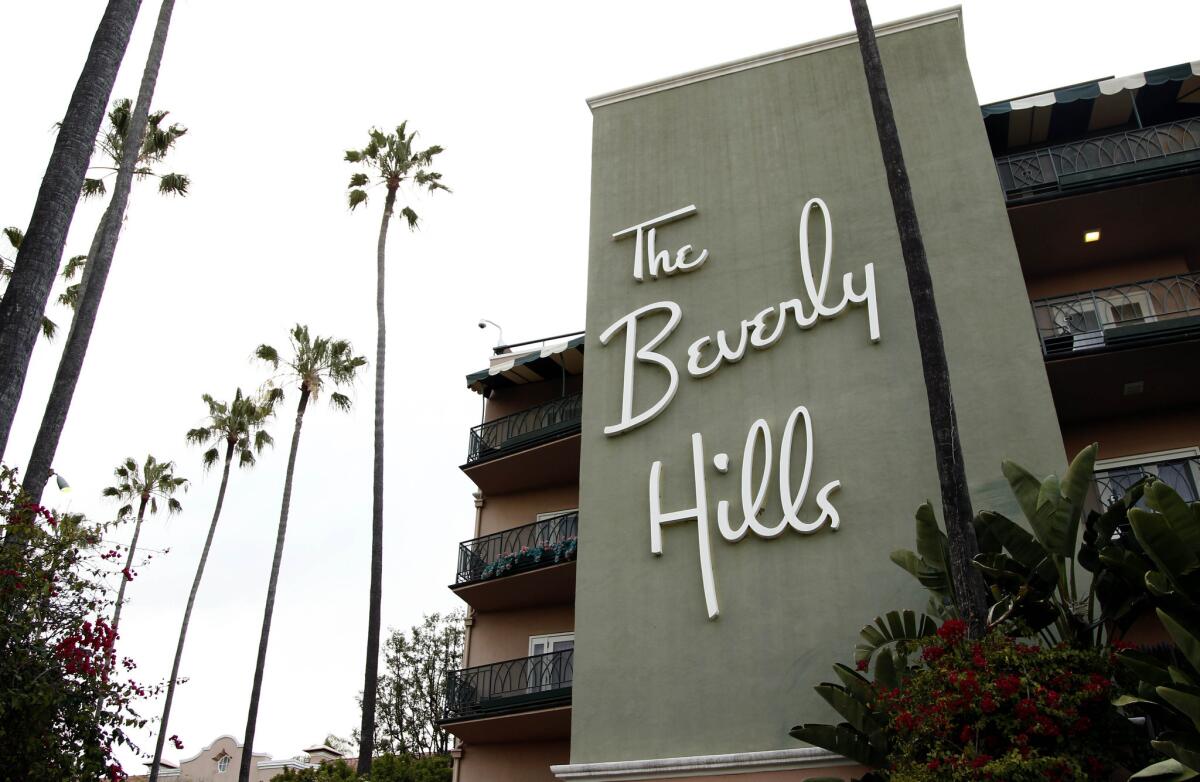Beverly Hills council to weigh weakening of historic preservation law

The Beverly Hills Hotel, built before Beverly Hills became a city, was the first structure designated as a local landmark under the preservation ordinance passed in 2012.
The Beverly Hills City Council on Tuesday will weigh revisions to its lauded preservation law. Advocates of the law argue that the proposed changes could undo much of the progress the city has made in saving significant buildings.
The City Council adopted the current historic preservation ordinance in January 2012. Since then, the city has granted landmark status to 29 properties--including the Beverly Hills Hotel, Greystone Mansion and City Hall, a domed Spanish Renaissance structure on North Rexford Drive.
In the process, it earned high praise from the Los Angeles Conservancy, which awarded the city its highest A-plus rating.
In January, two planning commissioners promoted changes that many preservation activists said would have gutted the ordinance. Lili Bosse, then mayor, and Councilman John Mirisch, rebuffed those efforts and urged the Planning Commission and the Cultural Heritage Commission to collaborate on a version that would maintain the high grade.
Preservation advocates were cautiously optimistic, but the version now going before the council limits the city’s ability to offer preservation as a tool for residents.
Among other changes, the revised ordinance would prevent the city from designating local historic districts within single-family residential neighborhoods. In Los Angeles and nationwide, the conservancy said, local historic districts have proven to be an effective way to maintain community character.
According to a conservancy alert to its members, the new ordinance also includes “highly unusual definitions” that set the bar so high for designation “that only the most iconic places will qualify.”
“I think what we have now is working well, and I don’t know why we’re looking to revise it,” Mirisch said.
Concerns about property rights and values are helping to drive the changes, said Michael Libow, a local real estate agent whose Storybook-style residence, the Witch’s House, is No. 8 on the local landmark register.
The city’s list of master architects, whose involvement would help secure a local landmark designation, also includes designers, contractors and builders, Libow said.
“That’s a huge problem,” Libow said. “People were rallying to save homes that to me were of very little historic value. Some [houses] were functionally obsolete and do not match the site on which they’re placed.”
But Mirisch said Libow and other proponents of diluting the ordinance were being shortsighted. “If Beverly Hills becomes a city of McMansions,” Mirisch said, “that would have negative results on property values. We would lose what makes the city special.”
Twitter: @MarthaGroves
More to Read
Sign up for Essential California
The most important California stories and recommendations in your inbox every morning.
You may occasionally receive promotional content from the Los Angeles Times.











